Archive for the ‘hair transplant’ Category
Monday, February 6th, 2012
The method of using hair from other parts of the body to be placed into the scalp has been used for several years now. The Unfortunate thing is the change which occurs in the life cycle of body hair makes body hair the last option for scalp hair restoration. Body hair tends to have a long resting phase and short growth phase, meaning the majority of the hair which was transplanted will stay in the resting phase and have no visible hair growth.
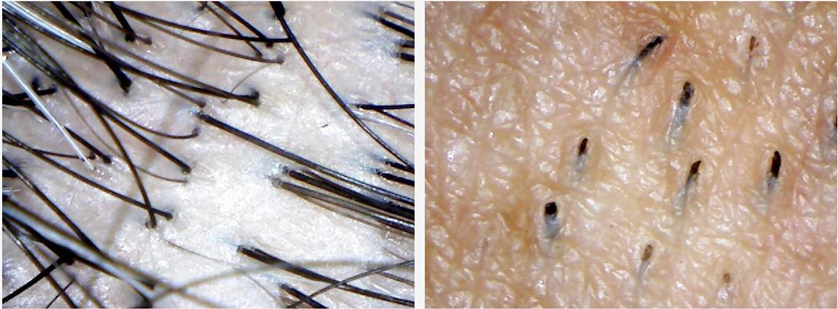
When seeing a side-by-side comparison of the scalp hair (left) vs. the facial hair (right), there is an obvious difference in the density of hair on the surface area and the average number of hairs in each follicular unit. Scalp hair is denser with more hair per grafts (over 2-4 hair/graft) while beard hair has less density with fewer hair per grafts (1-2 hair/graft)
On the other hand, mustache and beard hair has a shorter resting phase and longer growth phase. Because of this, men can grow their facial hair very long. For most people, facial hair is much thicker than scalp hair. Thicker hair could be translated as more bulk of hair after hair transplantation. Both thicker hair shafts and longer growth phase make beard hair a better option for scalp hair restoration in comparison to body hair transplant from other areas.
Unfortunately, there are two issues with beard hair restoration. The first is the fact they are very sparse, and removing hair only needs to be done through a strip procedure. The second regarding using facial hair for scalp transplant is follicular units found on the face have a fewer number of hairs per unit, which means there is less hair per grafts removed with FUE techniques.
Beard transplants are gaining popularity annually, and the newest technology in hair transplantation allows for hair loss doctors to use scalp hair for transplanting to the balding area in people which do not have good quality facial hair. Modern technology continues to advance the art and science of hair restoration further into new realms of possibilities, with an large annual growth reported yearly.
Tags: body hair transplant, Facial Hair Transplant, hair grafts
Posted in hair transplant, Hair Transplant Procedure | No Comments »
Monday, November 7th, 2011
There are often occasions when we receive inquiries about the latest hair transplant technology, and we feel an obligation to spread the news about these current updates. The field of hair restoration now has the new generation of Laxometer, which is the newest hair transplant device invented by Dr. Parsa Mohebi. The Laxometer II is a handheld tool which transforms the art and science of hair restoration. Since hair restoration is a growing sector of the cosmetic surgery arena, progressive updates on hair transplant new technology is necessary.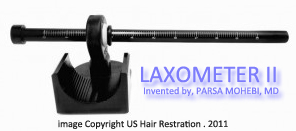
What Does It Do?
The Laxometer II enhances the quantity of hair grafts which can be transplanted precisely in one surgery. Once upon a time hair transplants of more than 3500 follicular grafts took more than one surgery to complete. With this revolutionary latest technology in hair transplantation, surgeries as such can be done in merely one procedure.
Being the newest technology in the hair transplant industry, the Laxometer II is a measuring device which is used to determine the laxity (elasticity) of one’s scalp. An accurate measurement of scalp laxity is critical when giving a precise determination of how large the donor strip should be. This latest breakthrough hair transplant technology gives a calculated measurement which can be increased when patients consistently do scalp exercises daily. The larger the available strip size, the more hair follicles can be transplanted.
During the 2011 International Society of Hair Restoration Surgery’s (ISHRS) Annual Scientific meeting in Alaska, Parsa Mohebi M.D. released this brand new invention for purchase by hair transplant surgeons. This latest technology in hair transplant surgery was warmly received with great anticipation and applause as it is going to help to continue the industry moving forward into a greater realm of success.
Posted in hair transplant | No Comments »
Friday, October 21st, 2011
 Hair loss and hair thinning is a result of testosterone formed in different areas like the prostate gland or hair follicles, which is converted to Dihydrotestosterone (DHT) in the scalp area. Hair follicles prone to genetic male patterned baldness contain DHT receptors, thus thinning hair and loss of hair can result. Over time men produce an abundance of DHT and the molecules affect their hair follicles and cause a decrease in size and eventually see their natural hair fall out permanently. Because of this common occurrence, hair loss in men is frequent. Hair loss and hair thinning is a result of testosterone formed in different areas like the prostate gland or hair follicles, which is converted to Dihydrotestosterone (DHT) in the scalp area. Hair follicles prone to genetic male patterned baldness contain DHT receptors, thus thinning hair and loss of hair can result. Over time men produce an abundance of DHT and the molecules affect their hair follicles and cause a decrease in size and eventually see their natural hair fall out permanently. Because of this common occurrence, hair loss in men is frequent.
DHT and hair loss from having the gene for male pattern baldness are the most common factors for male pattern baldness. Women suffering from female-pattern baldness, unlike their counterparts with male-pattern baldness, are not usually characterized by higher production rates of DHT from lower levels of testosterone. On the other hand, if for a number of possible reasons, a woman has increased testosterone, she can develop female patterned baldness like a man does through the same mechanism.
Hair in the prone areas to male patterned baldness: Corners, top, and crown are filled with DHT receptors in men who suffer Androgenic Alopecia The hair on donor areas such as back and sides, however, have fewer DHT receptors. This is precisely why hair is more permanent on the sides and back and not the top and front.
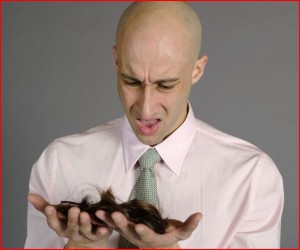
The distinction in the hair quality of different areas, such as the donor and recipient areas, allows for hair loss surgeons to remove the hair from one area and transplant it to the bald portions of the scalp. These newly transplanted hairs are permanent and immune to DHT. Finasteride (Propecia) is a drug which blocks the conversion of testosterone to DHT as a result of it blocking the enzyme alpha reductase. The amount of DHT in hair loss patients decrease when they are on Propecia and this helps to maintain healthy hair, and also helps some of the miniaturized hair become stronger.
We at US Hair Restoration often recommend medical treatment with DHT blockers in many of our patients who undergo a hair transplantation procedure in order to help maintain their own hair in addition to the newly restored, formerly balding areas because of a hair restoration surgery.
Tags: androgenetic alopecia, dht, DHT blockers, DHT receptors, dihydrotestosterone, female patterned baldness, finasteride, hair restoration surgery, propecia, testosteron
Posted in hair loss complications, Hair Loss Conditions, hair transplant, men hair restoration, women hair loss | No Comments »
Friday, September 16th, 2011
There are times when patients suffering from the more advanced stages of balding require a second hair transplantation surgery to complete the process. The question many of these particular patients have is what the time lapse is between the first and second surgeries.
 This depends on if there is density which needs to be added to the already transplanted areas. If so, there needs to be at least six months which has passed since the original surgery. This is because after six months there is more complete growth from the first hair transplantation, and a touch up in the already transplanted areas will bring more complete results. The amount of hairs transplanted in the second surgery is typically less than the first since the scar from the first surgery is removed a second time. Overall, the greater the density in the transplanted areas, the better the hair restoration will look long term. This depends on if there is density which needs to be added to the already transplanted areas. If so, there needs to be at least six months which has passed since the original surgery. This is because after six months there is more complete growth from the first hair transplantation, and a touch up in the already transplanted areas will bring more complete results. The amount of hairs transplanted in the second surgery is typically less than the first since the scar from the first surgery is removed a second time. Overall, the greater the density in the transplanted areas, the better the hair restoration will look long term.
Tags: advanced stages of balding, hair transplantation surgery, second hair transplantation surgery
Posted in hair transplant, Hair Transplant Procedure, men hair restoration, Second hair transplant procedure, Uncategorized | No Comments »
Saturday, September 3rd, 2011
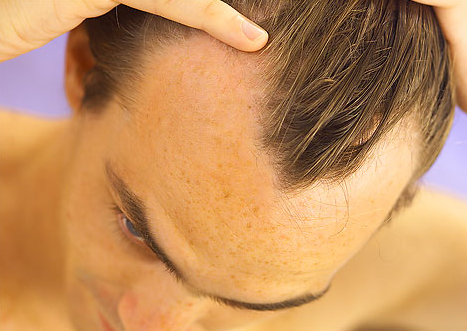 I am often asked questions by patients after their hair restoration surgery regarding how many transplanted hair grafts will fall out and never grow back. This question comes as a result of fear based on testimonies they have heard from patients who got a hair transplant several years ago from a different surgeon, at a time when the technology available was not as dependable as it is today. Also at times, they have heard of sad stories from the tabloids of celebrity hair restorations gone wrong. I am often asked questions by patients after their hair restoration surgery regarding how many transplanted hair grafts will fall out and never grow back. This question comes as a result of fear based on testimonies they have heard from patients who got a hair transplant several years ago from a different surgeon, at a time when the technology available was not as dependable as it is today. Also at times, they have heard of sad stories from the tabloids of celebrity hair restorations gone wrong.
At US Hair Restoration we pride ourselves on patient satisfaction, quality, up-to-date precise methods, and value. We at times get patients who have had hair loss procedures gone wrong from physicians using much older methods. They come to us to correct their past surgical errors and we gain their trust by giving them results which make them happy.
The fact of the matter is over 95% of transplanted hair grafts should permanently survive based on studies administered using microscopic follicular unit transplanted methods. These studies show anywhere from 95-99% are expected take hold and grow as healthy hairs within only a few months of a transplantation surgery.
Tags: celebrity hair restorations, follicular unit transplant, hair loss procedures, hair restoration surgery, hair transplant, transplantation surgery, transplanted hair grafts, us hair restoration
Posted in after hair transplant, hair transplant, hair transplant repair | No Comments »
Thursday, August 25th, 2011
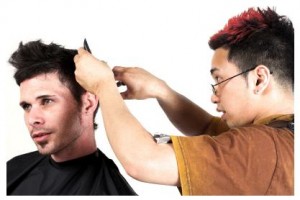 There are times when I receive inquiries as to why professionals such as hair stylists and dermatologists do not recommend hair restoration surgery to their clients or patients. I have scratched my head to this quandary as to why this is, since hair restoration surgery is the only method which is proven, permanent, and natural! The fact is, when it is done by a skilled hair restoration surgeon, the final product looks GREAT!!! There are times when I receive inquiries as to why professionals such as hair stylists and dermatologists do not recommend hair restoration surgery to their clients or patients. I have scratched my head to this quandary as to why this is, since hair restoration surgery is the only method which is proven, permanent, and natural! The fact is, when it is done by a skilled hair restoration surgeon, the final product looks GREAT!!!
In the past twenty years, hair restoration surgery has progressed significantly, but with the most noticeable changes happening in only the past five years. The most profound breakthrough in this time is the current method of dissecting hair grafts to maximize accuracy for long-term growth as well as the ability to transplant larger quantities of hair grafts (up to 5,000 in one sitting) which is known as a giga-session.
Unfortunately many stylists, and shockingly physicians as well, are not up to speed with modern hair transplantation techniques or the positive effects a surgery can have on their clients or patients. It is our goal at US Hair Restoration to continue to educate physicians, hair stylists, and the public about the science and art of current hair transplantation techniques.
We are intentional about inviting professionals such as physicians and hair stylists to hear about our services, witness a live surgery, and see life changing results just months after an operation. This knowledge helps them to be more informed of how to better direct their clients and patients. When it comes to hair and hair loss in general, hair stylists are seen as having great credibility for making suggestions. At US Hair Restoration we have a progressive campaign for educating them called the “LA’s Top Style List” and we believe our message will be made known.
Tags: dermatologists, giga session, hair grafts, hair loss, hair restoration surgery, hair stylists, hair transplantation techniques, LA’s Top Style List, modern hair transplantation techniques, us hair restoration
Posted in hair transplant, Hair Transplant Procedure, hair transplant repair, men hair restoration | No Comments »
Friday, August 5th, 2011
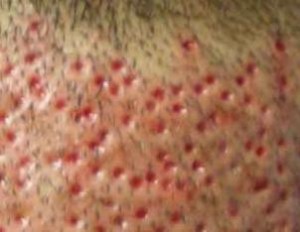 I am often given questions from patients regarding the Follicular Unit Extraction (FUE) procedure as to how it compares with the other procedures. The FUE is a method where hair is removed in single follicular units which is different than the strip method, which involved a large incision and dissection of strip into follicular units. There is a lot of information on the internet which do not recommend FUE procedures as oppose to many that promote it as the way of the future. In actuality, many surgeons and hair restoration facilities specialize in one method over another and might have bias to or against it. When the FUE is done properly, it has great results for many hair loss sufferers, mainly one’s with a minimum amount of hair loss. Some patients who cannot have the strip FUT (Follicular Unit Transplant) method, will find the FUE procedure to be very beneficial. I am often given questions from patients regarding the Follicular Unit Extraction (FUE) procedure as to how it compares with the other procedures. The FUE is a method where hair is removed in single follicular units which is different than the strip method, which involved a large incision and dissection of strip into follicular units. There is a lot of information on the internet which do not recommend FUE procedures as oppose to many that promote it as the way of the future. In actuality, many surgeons and hair restoration facilities specialize in one method over another and might have bias to or against it. When the FUE is done properly, it has great results for many hair loss sufferers, mainly one’s with a minimum amount of hair loss. Some patients who cannot have the strip FUT (Follicular Unit Transplant) method, will find the FUE procedure to be very beneficial.
Most transplant surgeries today are done through the FUT strip method for different reasons:
The strip method gives greater maximization of quality and viability of the hair follicles. The hair follicle transaction rate (grafts cut during surgery) could be higher with FUE method as oppose to strip technique. Larger surgeries of 4,000+ grafts can be done in one sitting with the strip method, where the FUE cannot get more than 1500 grafts per sitting. Larger FUE sessions also puts the healthy grafts outside of the body for a longer duration, thus making them more susceptible to losing health during the dissection and possibly dying in the process.
Modern technology in strip hair transplant has provided several methods which lower the visibility of scarring due to the FUT strip method. The FUE procedure is rather tedious, thus the cost of the surgery is greater. Ultimately, the best method is to be evaluated by a certified hair transplant surgeon who has knowledge and skill in both FUE and strip method and let him help you decide which method is best for you.
Tags: follicular unit extraction, fue, scar of hair transplant, strip hair transplant
Posted in donor scar, hair transplant | No Comments »
Thursday, June 9th, 2011
At time I receive inquiries from patients who have previously received transplant surgery at other facilities where they received a pluggy hair transplant, and are dissatisfied with their results. I recently had a patient in my San Francisco hair restoration office with a lot of pluggs from his old transplantation from years ago. He was wondering what repair transplant procedure I can do to help correct his previous surgical mishaps. I inform this patient of the repair hair transplant surgery we perform regularly.
 It is important to have a consultation with a hair transplant surgeon to see what the best method is to repair the pluggy looking area. It is important for us to make a few observations. If there is a hairline which is high enough and the donor hair numbers are sufficient, no plugs need to be removed. The hair line can be lowered and a transitional zone in front of the plugy hairline will be created with a heavier density to cover the plug visibility. It is important to have a consultation with a hair transplant surgeon to see what the best method is to repair the pluggy looking area. It is important for us to make a few observations. If there is a hairline which is high enough and the donor hair numbers are sufficient, no plugs need to be removed. The hair line can be lowered and a transitional zone in front of the plugy hairline will be created with a heavier density to cover the plug visibility.
If the hair line cannot be lowered because there is a lack of room from the original surgery, then plug removal is done by thinning them out (for denser plugs), or those micro and mini grafts could be removed. Follicular units need to be placed between the plugs giving a more even balance to the transplanted area. Adequate density is added to the transplanted area, thus minimizing the pluggy look.
I always emphasize the importance of being evaluated by a quality hair transplant surgeon, who can determine the proper route to take after a close examination. Repair in itself, appears to be simple, but there are challenging cases which might require multiple transplants for the best overall results.
Posted in after hair transplant, hair transplant, hair transplant repair, men hair restoration, San Francisco Hair Transplant | No Comments »
Saturday, April 9th, 2011
Here is a question from a previous patient of US Hair Restoration:
I was wondering if there is any limitations on performing a second hair transplant surgery for me who have one surgery with you before. I am experiencing more hair loss on the top and I also want to make it even denser in the front. I need to know when is the best time of doing a second procedure and what will be the cost of hair transplant for my second procedure.
A:
The best time for your second hair transplant is around six months from the first hair transpalant is you want to add density to an already transplanted area. If the transplantation is to be done on any other areas it could be done as early as 2 months as long as the donor is healed properly adn allows a second round of removal of strip. In FUE cases anytime after the first 2 weeks when the inflammation is over the second procedure could be done. We have done 2 FUE procedures as back to back but occasionally in some patients the swelling of tissue minimize our success in the first few days after surgery.
The cost of a second procedure in US Hair Restoration is based on the number of grafts and the current cost of hair transplant. However, we have 10% discount on our rates for our previous patients so your future hair transplant procedure will always be discounted with USHR.
Tags: after hair transplant, cost of hair restoration surgery, fue, general information, hair loss, hair loss treatment, hair restoration time restraints, hair transplant cost, hair transplant surgery, hair transplant time restraints, high density hair transplant, large hair transplant case, multiple hair restorations, multiple hair transplants, second hair transplant, time after hair transplant, time between hair transplants, time limit on second hair transplant, time restraints for hair transplants Posted in Achieving quality hair restoration
Posted in after hair transplant, hair transplant, Hair transplant cost | No Comments »
Saturday, March 12th, 2011
Here are a few frequently asked questions we have for your general inquiry:
How do you relocate hair grafts once broken down into follicular units?
The hair grafts (or follicular units) are transplanted based on the individual needs of the patient. The doctor will draw the hairline at your initial consult and right before the procedure and discuss it in detail with the patient. Designing the hairline has to do with the degree of baldness in each area of the scalp and the patients’ preference.
How are the hair grafts placed?
The follicular units must be immersed in a special solution in cold temperature once they are taken from body. When the sites are completed by the surgeon, the hair technician will gently insert the grafts one at a time. This is a very meticulous process and typically takes a few hours.
Does Dr. Mohebi perform the hair transplant surgery himself?
All surgeries are performed by Dr. Mohebi. He will get assistance from a surgical team of hair technicians during dissection and implantation of the follicular unit grafts.
Am I put under sedation while I get the procedure?
You will be put under sedation during the procedure but you will still be conscious. You will become more alert and aware as the surgery goes on, in which you will be sitting in an upright position in a surgical chair most of the time. You can watch a movie, read a book, listen to music or you can sleep (if you choose to) during your hair transplant surgery.
How long before the transplanted area doesn’t look like a procedure has been done?
Redness and swelling after hair restoration surgery is not uncommon and may last a few days following the procedure. Most patients generally recover from surgical swelling and redness after day 4 or 5. A loose fitting hat can be worn to prevent direct sunlight, which will protect the grafts and also keep your swelling or redness from being seen by others, if that is your concern.
Where can I find before and after photos of Dr. Mohebis’ work?
Before and after photos as well as video testimonials of previous hair transplant patients can be found at our facebook page: http://www.facebook.com/home.php#!/pages/US-Hair-Restoration/148987321796051, which we will keep updated as much as possible on a regular basis.
Tags: after hair restoration surgery, after hair transplant, before and after photos, care after hair transplant, Dr. Mohebi, hair line, hair transplant, hair transplant surgery, us hair restoration
Posted in after hair transplant, hair transplant, Hair Transplant Procedure, Video | No Comments »
|
|



 Hair loss and hair thinning is a result of testosterone formed in different areas like the prostate gland or hair follicles, which is converted to Dihydrotestosterone (DHT) in the scalp area. Hair follicles prone to genetic male patterned baldness contain DHT receptors, thus thinning hair and loss of hair can result. Over time men produce an abundance of DHT and the molecules affect their hair follicles and cause a decrease in size and eventually see their natural hair fall out permanently. Because of this common occurrence, hair loss in men is frequent.
Hair loss and hair thinning is a result of testosterone formed in different areas like the prostate gland or hair follicles, which is converted to Dihydrotestosterone (DHT) in the scalp area. Hair follicles prone to genetic male patterned baldness contain DHT receptors, thus thinning hair and loss of hair can result. Over time men produce an abundance of DHT and the molecules affect their hair follicles and cause a decrease in size and eventually see their natural hair fall out permanently. Because of this common occurrence, hair loss in men is frequent.
 This depends on if there is density which needs to be added to the already transplanted areas. If so, there needs to be at least six months which has passed since the original surgery. This is because after six months there is more complete growth from the first hair transplantation, and a touch up in the already transplanted areas will bring more complete results. The amount of hairs transplanted in the second surgery is typically less than the first since the scar from the first surgery is removed a second time. Overall, the greater the density in the transplanted areas, the better the hair restoration will look long term.
This depends on if there is density which needs to be added to the already transplanted areas. If so, there needs to be at least six months which has passed since the original surgery. This is because after six months there is more complete growth from the first hair transplantation, and a touch up in the already transplanted areas will bring more complete results. The amount of hairs transplanted in the second surgery is typically less than the first since the scar from the first surgery is removed a second time. Overall, the greater the density in the transplanted areas, the better the hair restoration will look long term.



